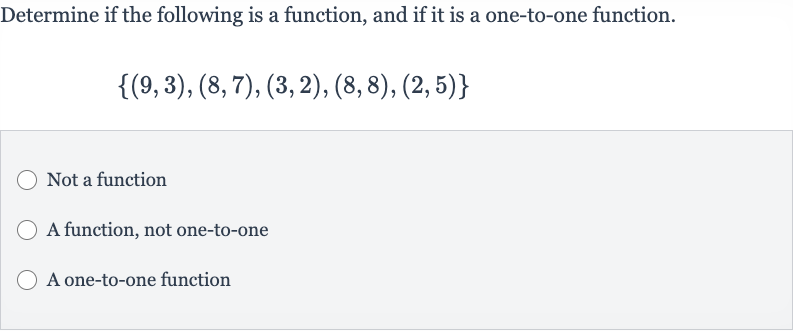Full solution
Q. Determine if the following is a function, and if it is a one-to-one function.Not a functionA function, not one-to-oneA one-to-one function
- Check Input-Output Mapping: To determine if the given set of ordered pairs represents a function, we need to check if each input (first component of each ordered pair) maps to exactly one output (second component). If an input is associated with more than one output, then the set does not define a function.
- Examine Ordered Pairs: Examine the set of ordered pairs: . We notice that the input is associated with two different outputs: and . This violates the definition of a function, where each input must map to exactly one output.
- Identify Non-Functionality: Since the input '' maps to two different outputs, we conclude that the given set of ordered pairs does not represent a function.
More problems from Intermediate Value Theorem
QuestionGet tutor help

